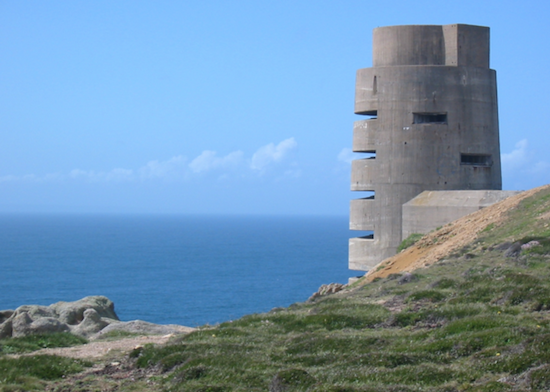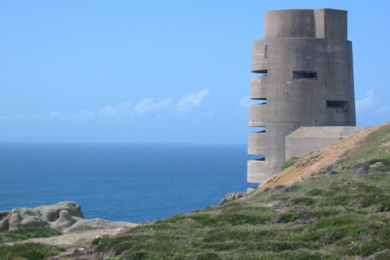If our current cultural predicament can be summed up in a tweet, it’s this: Alan Sugar points at a version of himself on his giant TV that dwarfs his mortal physique, from an episode of the hit British show The Apprentice. It speaks to so much in 2015. The raging, surreal narcissism that has become so normalised that we longer notice it; the unending primacy of charmless business and retail culture to the degree that it has become entertainment in and of itself; the rise of tech in the home which has seen it become an increasingly important site of leisure.
You could characterise 2015 as a many-fronted search for comfort. War-fleeing middle eastern refugees sought theirs desperately; well-fed middle managers sought to increase theirs exponentially. This is the year that ‘binge-watch’ became Collins Dictionary’s word of 2015 and Netflix n’ chill became down wi’the kids editorial slang. It’s the year we retreated to a contiguity of fortresses called the Faceburbs. In a 1994 article, JG Ballard identified the claustrophobic nature of British lifestyle with a pithy phrase. "We live in the TV suburbs, among the video shops, take-aways and police speed-check cameras, and might as well make the most of them, since there is nowhere else to go." The Faceburbs, then, is the extension of Ballard’s stalemate, an escape into not only the home per se but into the comfort of our technologies via TV box sets and pally, Twitter-aided event television – or into the horror of live-feeds of riots, acts of terrorism and mass shootings and their resulting think-pieces on smartphones and tablets. The Faceburbs is anywhere with a screen.
Of the top 10 most watched TV shows in 2015, nine were episodes of The Great British Bake Off. Another show that did surprisingly well was the nostalgic drama Call The Midwife, which enjoyed viewers of around 11 million at Sunday teatime. One aspect of the popularity of both is their peacefulness, their evocation of a sense of equilibrium and fairness, which contrasts sharply with the mediated chaos of world events outside. Channel 4 shows Gogglebox and First Dates are two programmes that, in their own way, bring the frisson of human interaction into the living room, creating an experience that’s a mix of sociability and voyeurism. Gogglebox is very watchable while also being the embodiment of the late communications theorist Neil Postman’s assertion that television is inherently absurdist. It creates absurd situations, such as us sitting there watching other people watching television while they’re filmed in their own home. But these programmes feed a more innocent need, one for a kind of community that simultaneously allows us to remain safe and cosy and inside – even if we are watching on-demand from a train.
Our fortresses, whether fixed or transient, are connected to the fortresses of our friends and followers in the social-media echo chamber. This has come to define our culture – a culture that has implications on our perception of life "outside".
On Friday 13th November I was at home with my wife and some mates when our phones started receiving notifications about the unfolding terror attacks in Paris. A friend who until recently lived in the city started making what turned out to be quite emotional Skype calls in the next room as I read a news liveblog aloud. We noticed some friends and acquaintances who were in Paris that weekend had used Facebook’s Safety Check, a new feature developed by the social network for natural disaster and utilised for the first time for a terrorist attack, to let loved ones know they are in a safe place.
The television was sluggish in comparison to this flurry of digital activity. Rolling news was following … not much really, or at least only following the same leads we were on Twitter but with a lag while the journalists verified correct claims from wrong. I switched over to BBC One, which was still broadcasting Children In Need. Shane Richie and Nick Grimshaw were making the best of some kind of improvised sketch. I could have been projecting this, but the camera seemed to catch raw emotion on Grimshaw and Richie’s faces – was it fear mixed with guilt that while a massacre was in progress in a city not too far from theirs, they were in the process of ignoring it? It’s how we felt in the room that night at least: we needed to take part, to make it real, to feel the fear, a modern urge.
The BBC was subsequently criticised for not including anything about the attacks on its flagship channel until midnight in obedience to its commitment to the charity fundraiser. The oddness of Richie and Grimshaw’s obvious discomfort was strange for such light, mainstream entertainers, the opposite of the apparent knee-slapping defiance of Blitz-era entertainers. Instead, this and so much else in the aftermath seemed to riff on the portentous tone of much of our media – The Apprentice, X-Factor or a big Premier League game – but instead of overblown and manufactured fear, it was real: a well-paid brand of cold hard dread, HD horror. A show that keeps insisting that it must go on.
The spectacle of the England v France football friendly a few days later became a televised symbol of unity between the two cities, two poles separated by the Eurostar train. English fans sang, well, hummed along to Les Marseillais. England won the game 2-0 against a French side seemingly wracked by fear and trauma from their ordeal in France, inside a stadium that was protected by police officers armed with automatic weapons and in bionic armour. It was agreed after the game that the fact that the young Dele Alli scored a screamer paled into insignificance against the gravitas of the event. In asserting that it was a symbol of our free society while simultaneously creating fortress-like conditions at the stadium, the spectacle achieved an oxymoronic quality, double-backing on itself in a circular motion, much as our political rhetoric does. It’s a motion that acts as a metaphor for much of our cultural malaise; an endless u-turn. David Cameron spinning on his heels and walking away for all eternity.
"You ain’t no Muslim bruv" looping into infinity.
After Sunday’s "terrorist" attack in Leytonstone, in which the assailant wielded a knife and shouted about Syria, 33-year-old lift technician Dave Pethers, who himself sustained some albeit not life-threatening injuries, criticised the amount of people seemingly content to film the incident instead of help overpower the attacker with him. "There were other adult men standing there, just filming it on their phones. There were so many opportunities where someone could have grabbed him." There is something incredibly indicative in the scene Pethers evokes here, as if it is a future echo of our own extinction: we missed the end of the world because we were too busy filming it. But could it be that it is just another, newer kind of displacement that our technology now affords us. That the smartphone has given a failsafe way to ignore danger and discomfort, while leading us towards something not altogether clear while we’re not looking.
There is an inherent yet explicit violence at play in our communications-fuelled society, an accelerated and alarmist state of emergency that mirrors the outfall of an out-of-control global arms trade as much as it does today’s increasingly competitive economic environment. Popular culture feeds off this world, reacting to it in different ways, giving us dog-eat-dog capitalist-realist light entertainment in Dragons Den and The Apprentice as much as it has quality dramas depicting the gothic and violent nature of late capitalism in the US, such as Breaking Bad, The Wire and Orange Is The New Black.
Callus-for-hire Katie Hopkins would have served in the army were it not for her epilepsy. In his revealing interview feature with her for the Guardian Weekend magazine, Jon Ronson quotes a prison psychiatrist, who tells him: "All violence is an attempt to replace shame with self-esteem." Hopkins has four violent fits per night, sometimes waking up with a dislocated shoulder. The former Apprentice contestant turned columnist has been admitted to hospital 26 times in nine months. "She doesn’t like talking about it because she sees it as a weakness," writes Ronson. Katie talks of "building an armour" around herself as a form of protection. Only the thick-skinned survive, but thick skin is sometimes just another way of saying you’re past caring.
It can often feel like popular culture is an abstract concept today. Instead of houses, the Faceburbs is made up of islands of mediated information entities, ourselves included, based on accumulations of data, images, sounds, until a cultural figure can be anything from Adele, to Donald Trump, to the attacks in Paris, to you (if you generate enough clicks). To me, it feels like we have passed a threshold along the line on our journey into digital. We’re not in the cloud, but bobbing around in a server-powered sea. Comfort engulfs fear and fear comfort in a relentless cycle. What many will increasingly look for to save them from this befuddling state is a foghorn to show them the way. What if Trump or his new apprentice Hopkins don’t turn out to be the buffoons we take them for? What if their thread of unchecked but loud assertions and hardened, armour-like self-protection wins out in this war of attrition, and they turn out to be accidental prophets?



